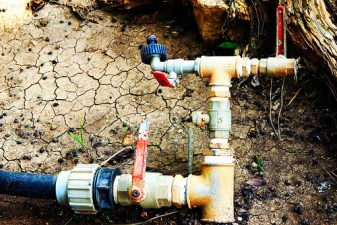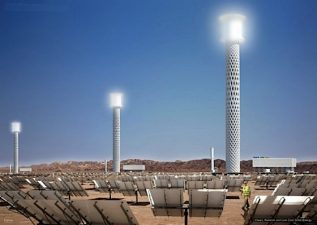
The Ibri II solar power plant, Oman will supply power to 50,000 households. the project is financed by Saudi Arabia, Kuwait and Gulf-based investors.
Gulf nations unite to build the first solar energy power plant in Oman: The Ibri II is a 500MW photovoltaic solar power project located in the Ad-Dhahirah region of Oman. The size of it will power about 50,000 homes.
Now completed, it is the first utility-scale renewable energy facility in the Sultanate of Oman. Until now, Oman’s primary source of energy was natural gas, with a small percentage of diesel fuel in the mix.
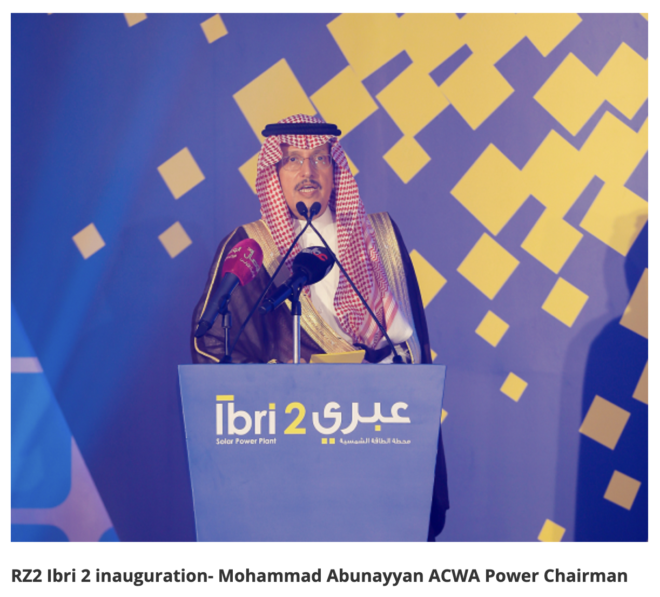
The Ibri power plant is built, owned and operated by the Shams Ad-Dhahira Generating Company, a special purpose vehicle incorporated by ACWA Power of Saudi Arabia, (50%), the Gulf Investment Corporation (40%), and the Kuwait-based Alternative Energy Projects (10%).
“As a company that is driving the transition globally, we are extremely proud to play a key role in supporting the Sultanate of Oman’s ambitious Vision 2040 energy transition goals,” says Mohammad Abunayyan, ACWA Power Chairman, pictured below. “Since our market entry into Oman in 2011, we have brought in significant foreign direct investment, because we believe strongly in its vision and future.”
ACWA Power from Saudi Arabia develops, invests in and operates power plants and desalination water plants in 12 countries. ACWA Power’s portfolio, with an investment value in excess of USD 67.1 billion, can generate 42.6 GW of power and produce 6.4 million m3 /day of desalinated water.
Gulf Investment Corporation based in Kuwait is a supranational financial institution owned equally by the 6 Gulf Cooperation Council states. GIC has paid-up capital of US$ 2.1 billion, and may be characterised as being part-sovereign wealth fund, part-private equity house and part-investment bank.
According to this report, The Gulf Cooperation Council (GCC) region plays a vital role in shaping the global energy markets because of its substantial amount of hydrocarbons resources. Although the GCC has abundant hydrocarbon resources, countries in the region have also shown their commitment and intent to become the global leaders in alternate energy. All the countries in the Middle East have also set targets for the deployment of renewable energy at the federal or local level.
The Ibri II solar power plant is backed by a 15-year power purchase agreement with the Oman Power and Water Procurement Company (OPWP). Ultimately solar power plants get built with incentives: investors put down the money and then are promised high feed-in tariff rates for a fixed time, usually the life of the solar panels – about 15 or 20 years.
(You don’t need to be a big company to go solar. See our DIY solar guide here).
Financing of $417M USD was finalised in March, 2020 and the solar plant was just made operational. When it reaches its peak production capacity the Omani solar power plant will power 50,000 Omani households while offsetting approximately 340,000 tonnes of CO2 emissions a year.
Located in a 10 square mile undeveloped area within the Ibri Wilayat Province of the Ad-Dhahirah Governorate of Oman, the power plant is about approximately 200 miles away from the city of Muscat and about 80 miles from the UAE border.
Solar Units Built by China
Powerchina Huadong Engineering Corporation (HDEC), a subsidiary of Powerchina, is the engineering, procurement, and construction (EPC) contractor for the project.
China-based Jollywood supplied the solar modules, while Sungrow is supplying the inverters. The First National Operation and Maintenance Company, a subsidiary of ACWA Power, will be responsible for the operation and maintenance of the Ibri II solar farm. Yahya Engineering and 5 Capitals Environmental & Management Consultancy were engaged in conducting the environmental and social impact assessment.
The over all aim of the plant and ones to come is to reduce Oman’s dependence on fossil fuels.
Oman declares that 11% of its electricity will be from renewables by 2023, and 30% will be renewably sourced by 2030. Even though it is one of the countries with the highest solar densities (potential to go solar) in the region, it has only started thinking about going solar because the state is gifted with natural resources such as natural gas.
If you have a proposal, bilateral agreements and solar tenders will need to be run through the Oman Power and Water Procurement Company to succeed.
Gulf Country Fuel Sources and Opportunities
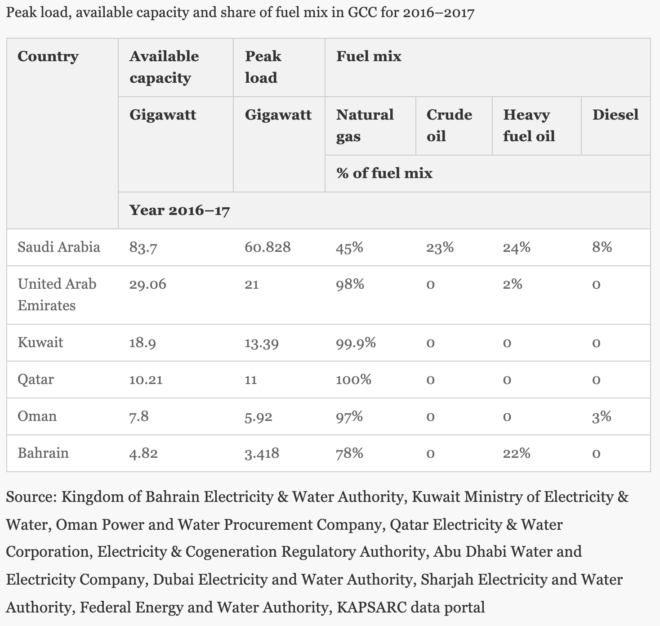
According to PV Magazine the Middle East is seeing strong growth in solar this year: “The Middle East, and the Gulf in particular, has been home to record low solar tariffs in recent years,” says the report.
“Major projects are being awarded via tenders, with prices gradually closing in on a remarkable $1 USD ct/kWh. Of course, this is no coincidence due to the region’s favorable solar conditions: availability of cheap and sunny desert land, low labor costs, cheap project financing, supportive tax regimes, large projects benefitting from economies of scale, well designed tender structures, and decreasing PV component prices.”

Location for proposed Neom City, on the Red Sea.
I’d add that Saudi Arabia is also a leader in these developments, swooping into new areas like Oman for instance, but also into the development of alternative fuel sources and storage, like hydrogen. I’m a fan of their exploration and confidence in new energy sources (they have fat wallets and can take risks) and less a fan of their newly in-development city called Neom, purported to be a sustainability city made from dreams.
Plenty of Europeans are swooping in wooed by Saudi money and offering elaborate solutions to Saudi Arabia that might better come from local and indigenous sources. Read the book Lo-Tek for a primer on what those solutions might look like.
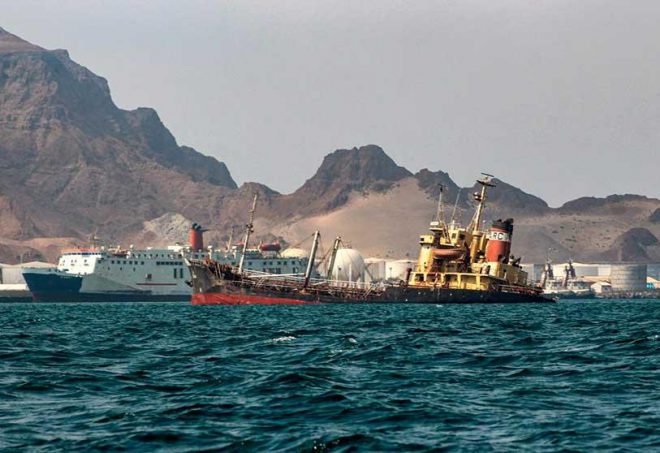
Also with an oil tanker about to explode on the coast of Yemen any dreams of an ecological paradise in Neom will soon turn into a nightmare when everything is coated in bitumen. The tanker held by Houthi rebels is in the crossfire between escalating conflicts in the region that will make the Exxon Valdez explosion look like child’s play.

